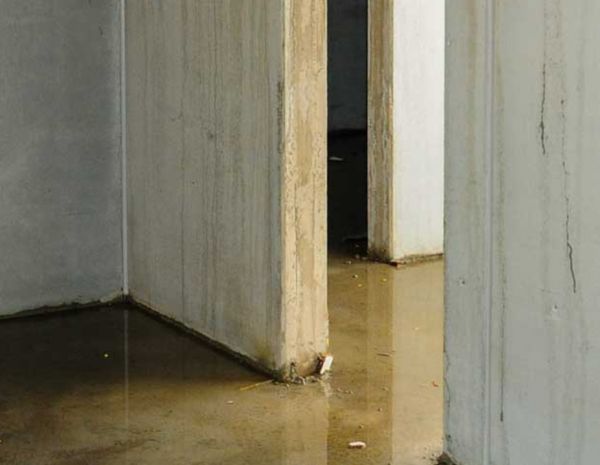If you’re reading this, you may be dealing with flooding in your basement or crawl space. Basement and crawl space flooding are common, but that doesn’t make it any less stressful to find in your home. Fortunately, the cleanup after flooding or water damage does not have to be a crisis; keep reading to learn how to handle this situation.
1. Safety first, then find the cause of flooding
If water is actively flooding your basement or crawl space, you must find the cause quickly.
First, ensure that no electrical sockets or panels are in contact with the water before going near it. Then, turn off the power and use flashlights if you have to. Burst pipes, cluttered gutters, broken water heaters, extreme weather, and inadequate sealing are all reasons you might find water in your basement or crawl space.
Turn off your water supply if you suspect the water is from a pipe. It’s important to know when to call in the professionals if the job is clearly beyond your skills. Make photo records of anything that may become an insurance issue.
2. Remove water as quickly as possible
After identifying the source of the flood, you may still have standing water in your basement or crawl space. Standing water can do incredible damage if left for any length of time. It quickly seeps into wood and concrete, causing potential foundation problems, mold, and attracting bugs.
Use a suction pump for large floods or a wet and dry shop vac for smaller amounts of water. The aim is to clear the area in the fastest way possible.
3. Dry the basement or crawlspace out
When the standing water is gone, there will still be a lot of moisture in the area. A dehumidifier and fans are the fastest way to not only circulate the air but to grab the moisture in the air and contain it. Letting the area dry naturally will not only take forever but will usually cause a dangerous mold or mildew problem.
4. Clean any areas that have already grown mold
Depending on the flooding’s cause and when it started, mold might already be building up on the walls, floors, and belongings in the space. Don’t assume or hope that mold will go away by itself when things dry out. It will only get worse.
Call a professional to test the area and get a proper Industrial Hygienist to write up a cleaning protocol to be completed by a certified professional to return the area to a healthy state. If you had to sacrifice any items, consider changing your storage in the future so the floor is free of anything valuable.
5. Make repairs quickly to avoid a repeat
To prevent this inconvenience from becoming a regular thing, you must address the issue causing it quickly.
Having repairs or maintenance completed as soon as possible lowers the chances of a repeat issue. In an area prone to humidity, like a basement, consider using a dehumidifier all year round to ensure the air remains dry and mold-free.
Many causes of flooding in a basement or crawl space are not from a sudden incident like a burst pipe but from a minor issue where water builds up gradually. While forgetting about your basement or crawl space can be easy, checking them regularly and keeping them as clean and clutter-free as possible can help to spot and prevent an issue before it becomes a crisis.
Our team understands how stressful flooding in your home can be. Aside from our excellent customer service, we care about getting your property cleaned up quickly to help you return to normal life. With our comprehensive water and flood damage services, we have you covered!


